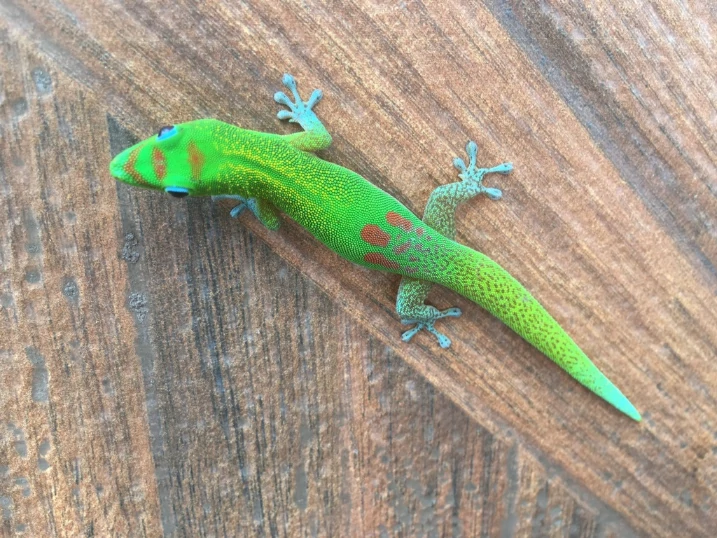You’ve probably touched a gecko and noticed how cool its skin feels, and wondered, do they actually stay that cold all the time? It seems strange for an animal that moves so fast and lives in warm places. So, are geckos cold-blooded?
Yes, geckos are cold-blooded reptiles. That means they can’t make their own body heat. Instead, they rely on the warmth around them to move, digest, and stay alive. Every rise and fall in temperature changes how their whole body works.
That’s why you’ll often see them on warm rocks at sunset, resting under lamps, or hiding in shade when it’s too hot. Temperature isn’t just comfort for them, it’s survival.
What Being Cold-Blooded Actually Means
When we say an animal is cold-blooded, we mean its body temperature depends on the environment. Unlike mammals or birds, geckos don’t have an internal heater.
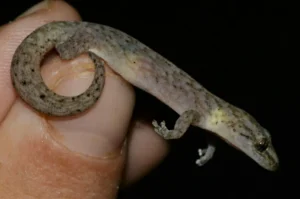
Their body heat rises and falls with the air, the ground, or whatever surface they sit on.
Scientists call this ectothermic, which basically means “outside heat.” Instead of burning food to stay warm like we do, geckos borrow warmth from the world around them.
A gecko is only as warm as its surroundings let it be.
Why Being Cold-Blooded Works for Geckos
At first, it might sound like a weakness, but for geckos, being cold-blooded is a big advantage. They don’t waste energy heating themselves, so they can survive on surprisingly little food.
A few small insects a week might be enough for some species.
Their bodies slow down when it’s cool, saving energy until warmth returns. That’s how they live in deserts, forests, and even on city walls.
They adjust their activity to the temperature. When it’s hot, they rest in shade. When it cools at night, they become active.
How Temperature Shapes a Gecko’s Day
A gecko’s daily rhythm revolves around heat. During the day, many species hide in cracks, under bark, or inside buildings where it’s cooler.
At night, when the air temperature drops to something manageable, they start hunting.
That’s why you often see them near porch lights. The warmth attracts insects, and the insects attract geckos.
If it’s too cold, they move slower, eat less, and may not climb walls. If it’s too hot, they flatten against cool glass or burrow into soft soil to escape.
Every choice a gecko makes (when to hunt, where to sleep, when to shed) comes down to temperature.
Why Geckos Bask in Warmth
Have you ever seen a gecko stretched flat under a light or sunbeam? That’s basking. They absorb heat through their skin and belly, letting their blood warm up.

This rise in temperature speeds up everything inside: digestion, muscles, even thinking.
Once they’re warm, they can chase insects with lightning speed. But if they cool down, movement slows, and so does reaction time.
That’s why heat lamps or warm rocks are so important in captivity. Without them, a gecko’s body can’t start the engine.
How Cold-Blooded Geckos Survive Cold Nights
When the temperature drops at night or during cold seasons, geckos have clever ways to handle it. Some tropical geckos find tight spots between rocks or inside tree bark that trap leftover warmth.
Desert geckos dig shallow burrows where the ground stays warmer than the air.
Others store extra energy in their tails before winter, using it when their movement slows. In extreme cold, their bodies can almost shut down. Movement stops, but life continues inside their cells. It’s a safe pause until the air warms again.
Why Geckos Need Warm and Cool Zones in Their Enclosure
For pet geckos, the same rules apply. They need a temperature gradient (a warm side and a cool side) so they can choose what feels right.

If the whole tank is one temperature, they can’t regulate themselves. That’s like locking a human in a sauna or freezer with no way to step out.
The warm side (around 88–92°F or 31–33°C) helps with digestion and activity. The cool side (around 75–80°F or 24–27°C) gives them a place to rest and avoid overheating.
Providing both lets the gecko decide what its body needs, something it’s evolved to do perfectly.
Do Cold-Blooded Geckos Feel Cold?
You might wonder if they feel cold like we do. Kind of, but differently. Geckos don’t shiver or complain, but their bodies send signals that something’s off.
When it’s too cold, they move sluggishly, lose appetite, and may sit still for hours.
Blood thickens slightly, slowing circulation. When they reach warmth, you’ll notice quick bursts of energy.
They become alert, tails twitching, eyes bright. They sense temperature deeply and show it through movement, not emotions.
How Being Cold-Blooded Affects Breeding
Temperature doesn’t just control movement, it affects reproduction. In some species, warmth during egg incubation can influence the baby’s sex.
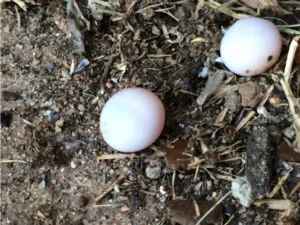
For example, leopard geckos incubated around 80°F often hatch as females, while warmer temps around 88–90°F lean male.
Nature balances populations through temperature. That’s also why wild geckos breed during warm months.
Heat makes their bodies ready to produce eggs and gives hatchlings the warmth they need.
The Role of Heat in Digestion
When geckos eat, warmth acts like a switch that turns digestion on. Enzymes that break down food only work well within a certain temperature range.
If the gecko’s body is too cold, digestion slows, food sits in the stomach, and bacteria start to grow.
That can lead to bloating or impaction. After feeding, geckos instinctively move to the warmer side of their tank to “bake” their meal.
Without proper warmth, even the healthiest diet can become dangerous.
What Happens When Geckos Get Too Hot?
Cold slows them down, but heat can kill them faster. A gecko’s safe upper limit is around 95°F (35°C). Beyond that, proteins in its cells start to break down.
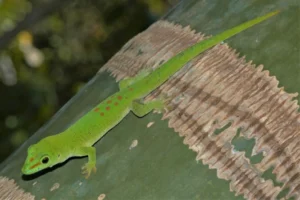
Their skin dries out, breathing becomes rapid, and they panic, climbing or digging to escape.
If a gecko can’t find a cooler zone, organs may overheat within minutes. That’s why natural shade and hiding spots are just as important as heat.
Even though they’re cold-blooded, they still need to cool down.
How Geckos Use Surfaces to Manage Heat
Watch a gecko closely, and you’ll see how it uses surfaces like tools. Rock, wood, glass; each one holds heat differently. They learn which spots warm up fast and which stay cool longer.
At night, a wall that soaked up daytime heat becomes a perfect resting place. In the morning, they might move to rough bark that feels just warm enough.
Their tiny bodies work like living thermometers, reading every surface before settling down. It’s smart, instinctive, and precise.
Why Geckos Prefer Certain Climates
Because their bodies depend on heat, geckos thrive in places where temperature doesn’t swing wildly. Tropical and subtropical regions like Southeast Asia, Africa, and Central America are ideal.
Nights are cool but not cold, and days are warm enough for steady activity.
Some geckos, like Moorish or Mediterranean house geckos, live in cooler areas by adjusting their habits. They stay near homes, where walls absorb heat and lights attract insects. Even in mild climates, they find ways to stay warm.
Do Cold-Blooded Geckos Hibernate?
Sort of. Many geckos go through a brumation period, which is a reptile version of hibernation. During colder months, they eat less, move little, and find a sheltered spot to wait it out.
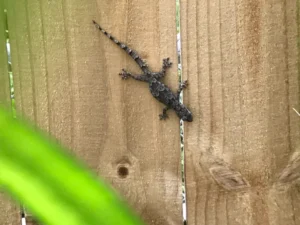
In captivity, some keepers let leopard geckos brumate naturally to mimic wild cycles. It helps reset their body rhythms and prepares them for breeding.
During brumation, metabolism drops dramatically. Movement stops, but life continues slowly inside their cells. Once warmth returns, they wake up hungry and active again.
How Being Cold-Blooded Shapes Gecko Evolution
Over millions of years, being cold-blooded has shaped how geckos look, move, and survive. Flat bodies help absorb and release heat quickly.
Nocturnal habits reduce water loss and avoid overheating.
Even sticky toe pads work best in warm, humid air for climbing smooth walls. Every part of them is designed to stay in balance with temperature.
Instead of fighting the heat, they learned to live with it.
How Pet Owners Can Support Their Cold-Blooded Nature
To keep a gecko healthy, your setup should mimic nature:
-
A warm basking area around 90°F (32°C).
-
A cooler rest zone around 75°F (24°C).
-
A gentle night drop to mimic evening air.
-
Hiding spots on both sides so they can move comfortably.
-
Regular humidity checks to prevent dehydration.
You’re not just giving them heat, you’re giving them choice. Choice is what cold-blooded animals use to stay alive.
Conclusion
So yes, geckos are cold-blooded and proudly so. Their body heat comes from the world around them, shaping every move they make.
When it’s warm, they thrive; when it’s cold, they rest.
It’s not about power, it’s about rhythm. They live in tune with light and shadow, heat and cool, day and night. Once you understand that, cold-blooded isn’t strange, it’s beautifully efficient.
Hi, my name is Ezra Mushala, i have been interested animals all my life. I am the main author and editor here at snakeinformer.com.

